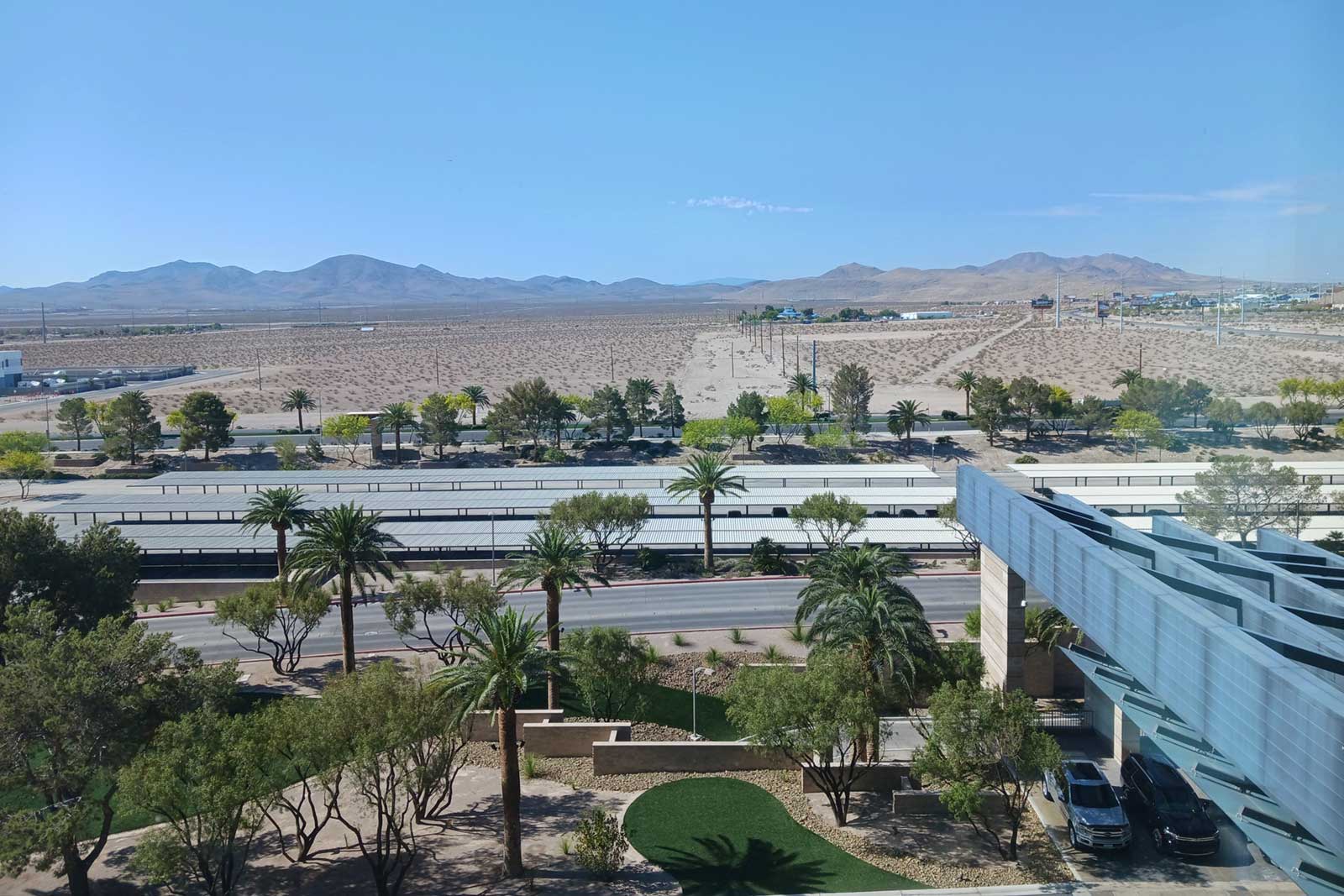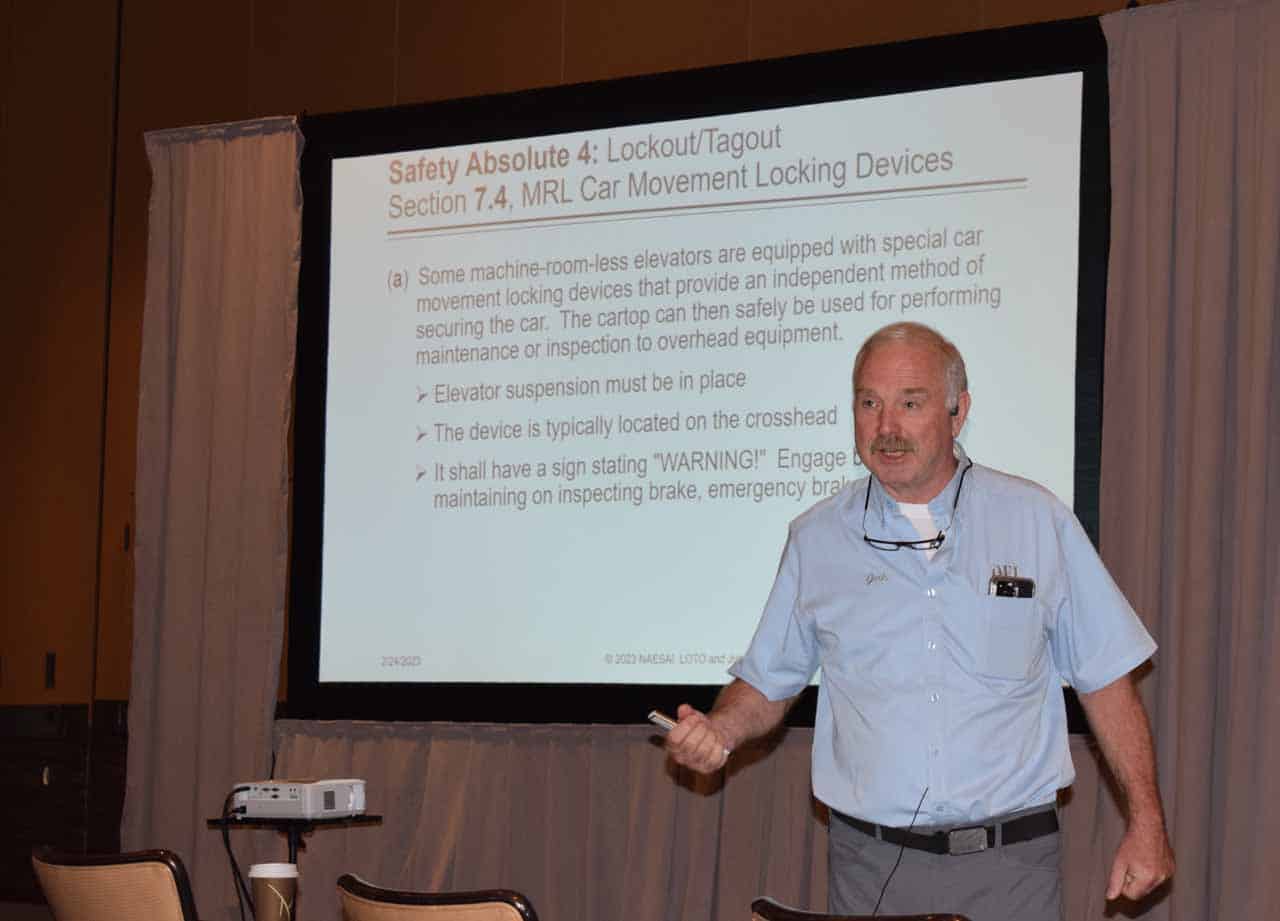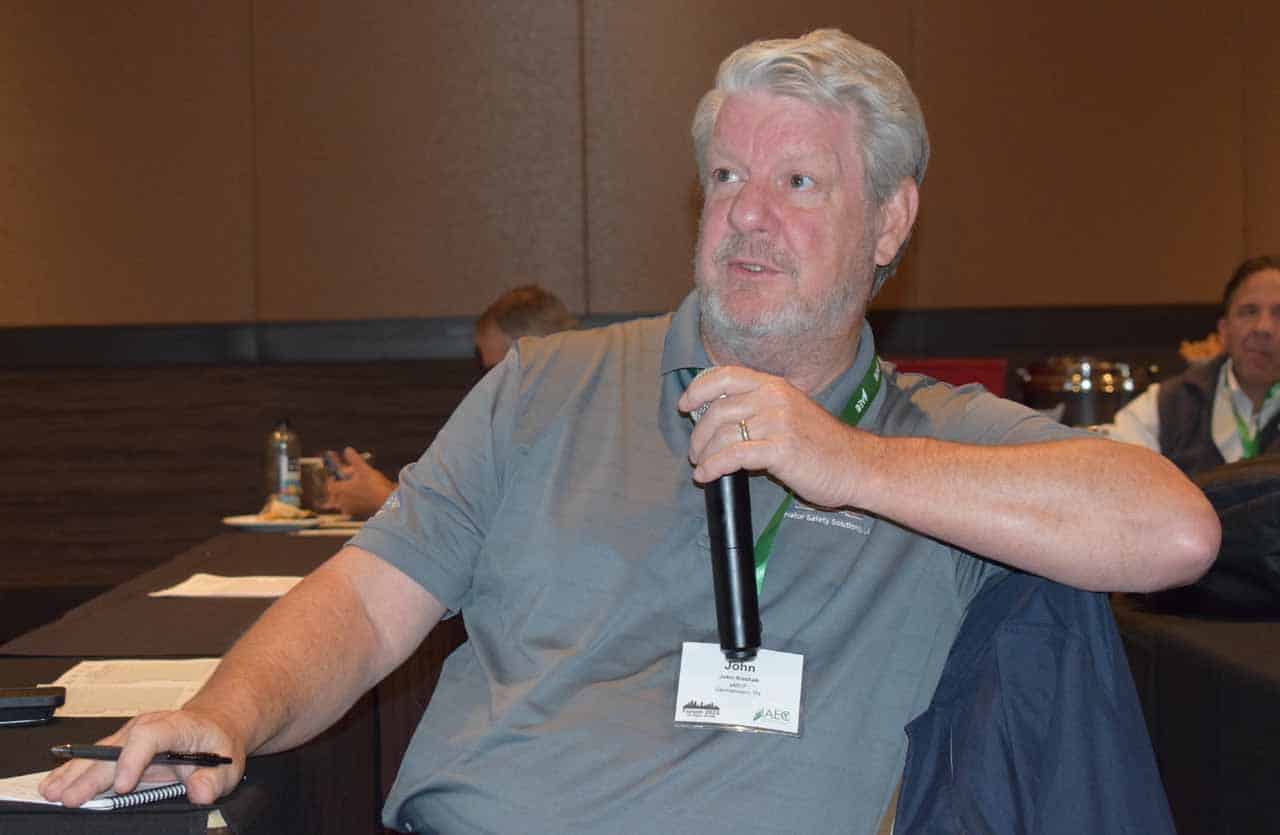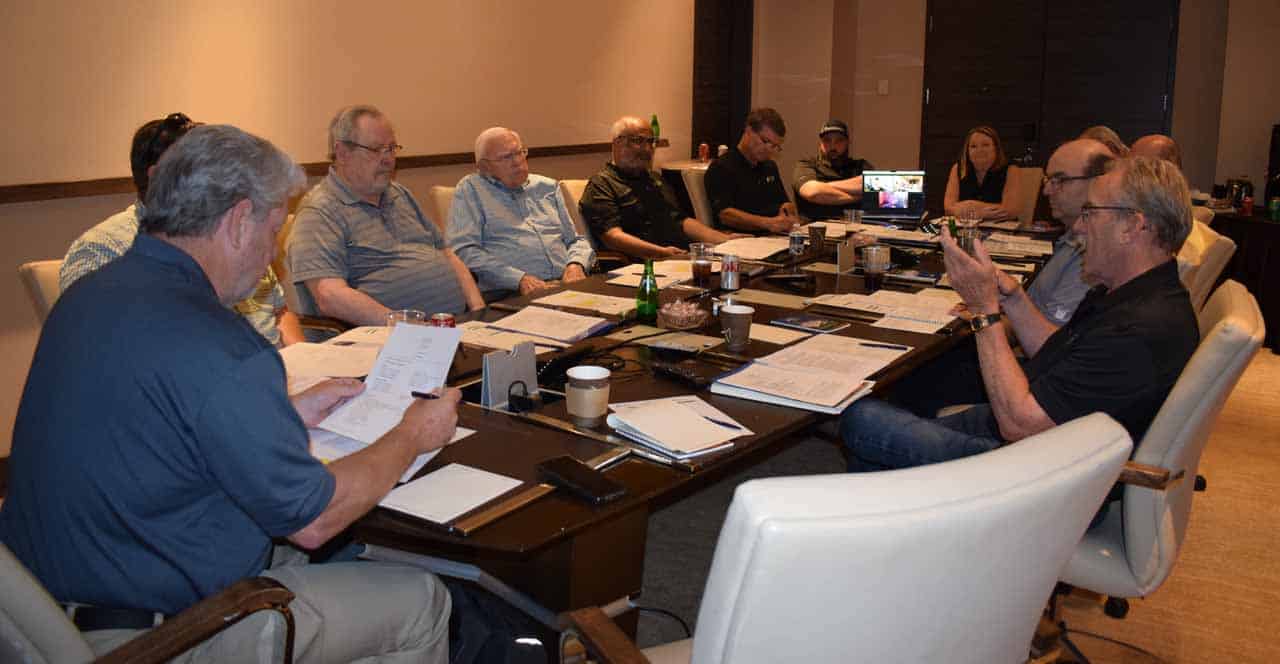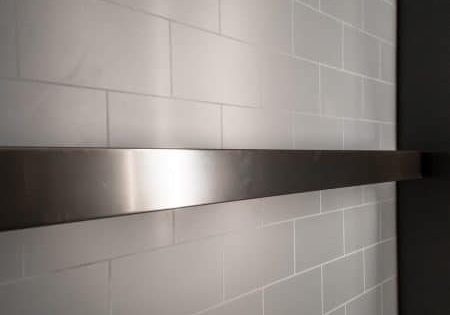Well-attended IAEC Forum 2023 provides education, networking, food and fun in the city that never sleeps.
What happens in Vegas will not necessarily stay in Vegas — at least for the nearly 140 vertical-transportation (VT) professionals who attended the International Association of Elevator Consultants (IAEC) Forum on May 23-26 at the M Resort Spa and Casino. That’s because an exceptionally strong slate of presentations, generous and enthusiastic sponsor support and a memorable venue left attendees with a wealth of takeaways. Ringed by scenic mountain ranges in the Las Vegas suburb of Henderson, the M is ideal for business events, with 92,000 ft2 of convention and meeting space and numerous restaurants from high end to casual. Naturally, it has an expansive casino area and large, elegant pool. Notably, it is the official headquarters hotel of the Las Vegas Raiders professional American football team. The Raiders’ logo is everywhere — from room keycard holders to restaurants to the various lobby displays such as memorabilia shadowboxes and a realistic football player mannequin backed by a flowing wall of water. It’s not at all unusual to encounter actual Raiders players — polite young men, all — in the M’s hallways, elevators, shops and restaurants.
Against this backdrop, IAEC organized an outstanding Forum that included three education-packed days, a lively board meeting, more eclectic food than is almost imaginable and an outstanding evening out generously sponsored by MAD Elevator. MAD also sponsored the always-popular opening-night reception, during which drinks and conversation flowed and attendees had fun visiting vendor booths and bidding on silent auction items to benefit the Elevator Escalator Safety Foundation (EESF).
Monday, May 22
With all members present, IAEC hosted its largest Board of Directors (BoD) and officers meeting ever, starting at 3 and lasting most of the afternoon. With Treasurer Tim Marshall and Eastern Region BoD Member Joe Carracappa joining via Skype, the meeting included IAEC President Nicholas Montesano, Vice President Bob Dieter, Secretary Paul Rosenberg, Central Region Member Daniel Swett, Southern Region Member John Koshak, Western Region Member Michael Fagan, International Member TAK Mathews; and At-Large Members Richard Blaska, Gregory Sacks, Hanie Lancaster, Matthew Lawrence and John Rearick. IAEC Executive Director Sheila Swett presided over the meeting.
With her son, Daniel, Sheila Swett told those in attendance about attending the International Sourcing Expo for Elevators & Escalators (ISEE) in Mumbai, India (organized by Mathews), and shared that IAEC welcomed two members of India’s Forum of Critical Utility Services as associate (rather than voting) members of IAEC. “It’s like having a sister city in India,” Koshak observed.
Discussion then turned to IAEC leaders applying to be on American Society of Mechanical Engineers (ASME) standards committees. All agreed consultants should have a voice in helping drive the ever-evolving ASME code.
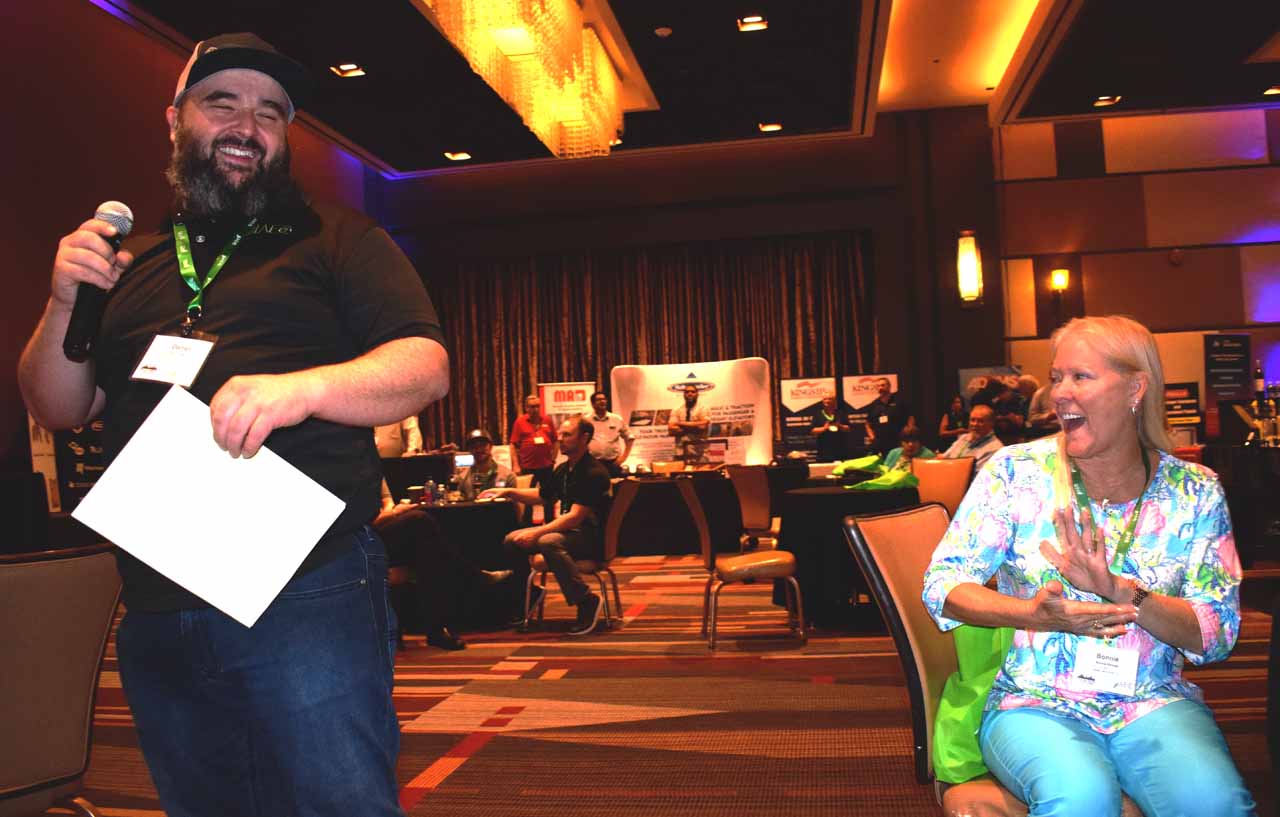
Observing both the BoD meeting and event had a great turnout, Montesano thanked everyone for coming. Discussion about the association’s continued global focus continued. In addition to IEES, Sheila and Daniel Swett — as well as Koshak— attended the International Elevator & Escalator Symposium (IEES) in Barcelona, Spain, and
plan to be at the next IEES in Edinburgh, Scotland, in December. “We need to form some thought patterns for the future and lean toward ‘go’ if it’s feasible cost-wise,” Sheila Swett said. The consensus was IAEC needs to continue to be present, both in North America and internationally. “If you don’t grow and stay visible, you become stagnant and die,” Montesano said. “We need to do at least two of these major international events each year.”
The BoD also went over IAEC Forum 2023 numbers, noting registrations for all categories of participants are up; observed the forum had a Gold sponsor (MAD) for the first time in five years; and granted Patrick Carrajat an honorary membership. Members also considered locations for the 2025 event after United in Atlantic City in 2024.
Southern California-based elevator incident investigation consultant Ronald High said the stance of Cal-OSHA’s DOSH is to “keep it complicated.”
Tuesday, May 23
As vendors set up, the day featured an all-day NAESA Code Update continuing education session led by the ever-lively Jack Day, director of education at NAESA International. Day talked about lock out/tag out (including procedures for escalators), the 9 Safety Absolutes and machine-room-less systems (MRLs). There was plenty of audience interaction, as Day asked and answered questions and moved around the room. He talked about how A17 was developed and has evolved.
With plenty of hugs and handshakes, attendees registered from 6-7 p.m. at a desk outside one of the M’s lower-level ballrooms. The opening-night reception featured vendor booths, an EESF silent auction and plenty of networking. Guests were greeted at the door by a chef at a prime rib carving station. Inside, they were invited to enjoy a towering chocolate fountain with dippers such as strawberries, marshmallows and graham crackers. At the room’s center was an open bar with a vast selection of wine, beer and spirits. In a foreshadowing of “The IAEC Racket: A Night at the Mob Museum” sponsored by MAD Elevator the next night, easy Jazz-era tunes — Sinatra’s “Sway” and Nina Simone’s “My Baby Just Cares for Me,” for example — filtered through the room. Silent auction items included, from ELEVATOR WORLD, a personalized EW magazine cover featuring yourself or a person of your choice, AirPods, golf balls and high-end cigars. Just under US$3,600 was raised for the Foundation.
Wednesday, May 24
The day started bright and early with breakfast and another chance to visit vendor booths. Guests then filtered into the main ballroom for a welcome from Montesano and conversations about the venue (“I put US$20 in a machine, literally pressed the button once, and it was gone!”)
“Thank you for taking the time, effort and cost to be here for this event and thanks to the sponsors,” said Montesano, who was joined onstage by Sheila Swett. Prior to the start of presentations, the pair introduced new EESF Executive Director Amber Catlin-Kolodziej, who took the stage to tell attendees about herself and talk a little about the Foundation’s mission.
EW President T. Bruce MacKinnon was the first presenter, with “State of the Elevator Industry.” MacKinnon provided an overview of EW — its history and reach, worldwide locations and future goals. “We couldn’t do what we do without the support of this industry,” he said. MacKinnon painted a picture of the elevator industry in the context of the larger economy, which, despite challenges, is projected to grow. Surveys conducted by EW in cooperation with Credit Suisse find the general outlook coming out of the pandemic is favorable, with the main challenge being a lack of skilled workers. Another big challenge is obtaining materials, which roughly 70% of respondents cited in one of the most recent surveys. Other hot topics MacKinnon addressed included private equity (M&A), AI, the Internet of Things (IoT), digitalization and how all these things affect the VT industry.
With some reshuffling due to personal schedule changes, next came Day with “Reopening Devices” for .1 CEU. Including plenty of questions and audience interaction, the presentation pointed out the dos and don’ts of the new door-reopening devices code, the meaning of detection according to A17.2 2020, leading-edge timing differences that have occurred since the last code update, Americans with Disabilities Act (ADA) requirements, reopening devices for horizontally sliding doors/gates, two-way communication systems in elevators; and how rectangular prisms are detected. “It doesn’t matter what Jack says; it matters what the code says,” Day emphasized.
Next up was “IoT and the Elevator Consultant” from Steve Reich-Rohrwig, president/CEO of MAD, and Anas Siddiqui of Tsaro. They spoke about the Matisse position indicator and the MosaicONE online platform that offers real-time elevator usage statistics for consultants, contractors and building managers. The pair explained that MAD and Tsaro partnered approximately four months ago on a new elevator data insight program that specializes in pattern recognition to improve performance and ride quality. In May, the team was signing up beta customers to provide feedback to help further develop the program.
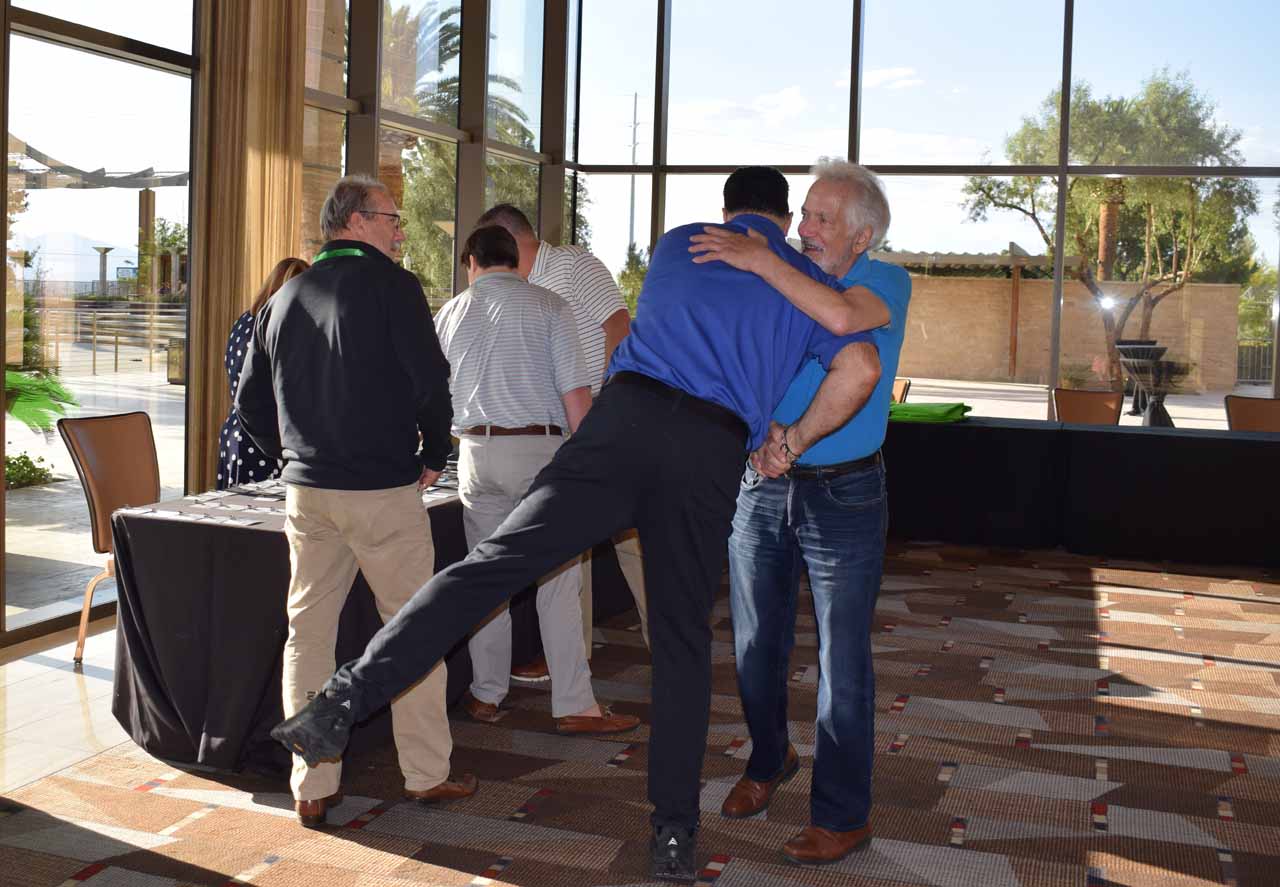
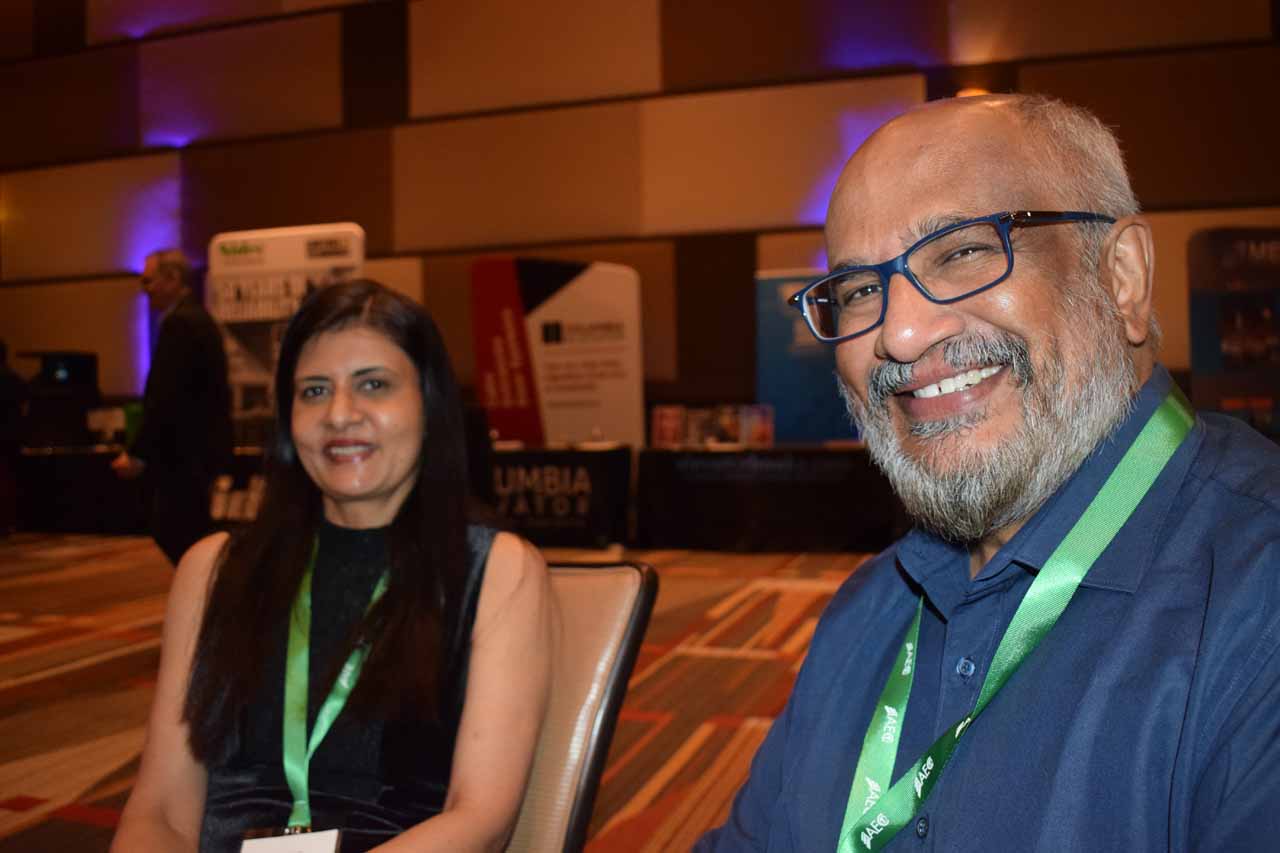
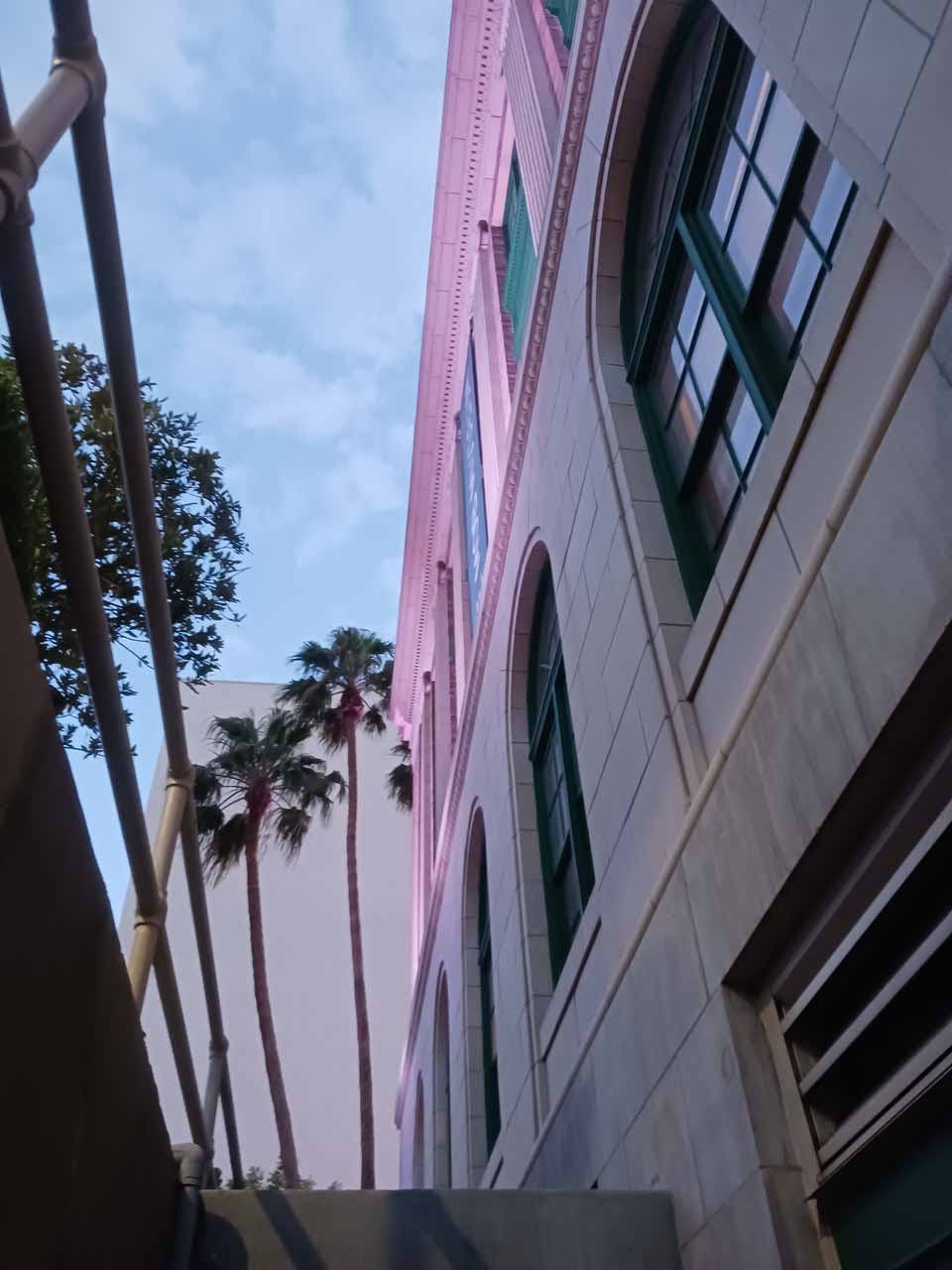
Unveiled in 2015, [Thomsen’s Inc.’s escalator handrail solution] My Shield is seeing success across North America and is gaining traction in Kuwait and Japan.
After a hearty lunch, presentations relaunched with Ronald High, an elevator incident investigation consultant based in Southern California, who spoke on “Cal-OSHA’s Department of Safety and Health (DOSH),” elevator code and how the two intersect. His presentation covered permitting and rules for home lifts and construction hoists, weatherproofing, door monitoring, emergency operations, ADA requirements and maintenance control programs. Much discussion occurred between High and audience members — including Blaska and Koshak — about the process and status of the myriad proposed changes to California elevator code. High said the stance of DOSH is to “keep it complicated.”
Next onstage was Vantage Elevation Vice President of Sales and Marketing Daniel Baltzegar with “Door Lock Monitoring (DLM) and Door Modernizations.” Observing that “DLM started in NYC en masse,” Baltzegar pointed out it is coming to states including Florida and Nevada. He explained what DLM is: Introduced in the A17.1-1996 code revision, it requires elevators to have a system that “accurately detects faulty door contact circuits and prevents the elevator from leaving a floor with the doors open.” Since not every jurisdiction adopted updated code at the same time, different states are at different points in their DLM journey. They all, however, will have to get with the program at some point, Baltzegar said.
To that end, Vantage has partnered with Argus as the exclusive distributor of the Argus DLM system outside of New York. Vantage is initially targeting states where DLM is mandated, as it continues marketing activities across the U.S. and Canada. Baltzegar showed a table revealing the number of elevators in six particular states, potential DLM candidates and dates of code changes. Out of the six, Florida is the state with the most elevators and potential DLM candidates: 73,708 and 25,798, respectively.
After a break, the afternoon continued with Walter Barnes of Electronic Controls Inc. (ECI) on “Pit Safety.” Code updates pertaining to pit safety were necessitated by serious accidents occurring in elevator pits due to lack of control of mechanical energy, unintentional car movement and lack of adequate pit lighting, he said. Current requirements specify separate switches for pit access, pit stop switches and pit light switches, Barnes explained, with the help of a graphic. None are used independently, he said: For safety, they should be required to function simultaneously.
In response to the criticality of pit safety, ECI introduced its PitSafeTM device approximately eight years ago. The device activates the pit lighting and the stop switch simultaneously, “virtually eliminating entry into the elevator pit without taking the elevator out of service,” according to Barnes. The code-compliant device has been on the market since approximately 2015 and has a considerable market share in North America and a growing presence in the Middle East. The audience asked many questions of Barnes, and discussion ensued about how requiring a device like PitSafe could be worked into the next code. “I believe this product is truly needed,” Koshak said.
The last presentation of the day was from Ben Godwin, business manager at Rath Janus, who spoke on “ASME 17.1 2019 Two-Way Visual Communications Requirements.” Showcasing the company’s SmartView two-way elevator communication system, his presentation included how the codes define two-way visual communication, who is responsible for the various components of a system (emergency phone, two-way visual device) and how such a system connects to the outside world (as well as related concerns such as cybersecurity). Audience members discussed various practices and codes in places such as Australia and California. In response to public personal privacy concerns related to cameras in elevators, Koshak observed: “Big brother is not watching you until you press the button for help.”
Into the Heart of Vegas
After a long, impactful day learning about various products and issues, nearly every attendee boarded a trio of large, comfortable tour buses as the sun set for a leisurely drive into the heart of Las Vegas for the Mob Museum event. In a black fringed flapper dress, Sheila Swett got into the spirit as she handed out sheets with the evening’s schedule: dinner and (bottomless) cocktails in the museum’s underground “speakeasy,” followed by a self-guided tour of the four-story museum, housed in a post office built in the 1930s.
Driving into the city provided quite the visual tour — the brown, dusty, desert terrain without a speck of real grass to be seen, billboards proclaiming “Sin Has Consequences; Repent,” Allegiant Stadium (home of the Raiders), cheap motels, massage parlors and then the sight of the strip itself with its fake Chrysler Building, giant replica Sphinx at the Luxor Hotel & Casino and the flashing red neon lights of the landmark Binion’s gambling hall.
Reserved for IAEC guests, the speakeasy was cozy yet airy — a dimly lit space with exposed industrial pipework ceilings, a pair of food stations (one featuring pasta, the other, meat) and capable bartenders, who were kept very busy by the group.
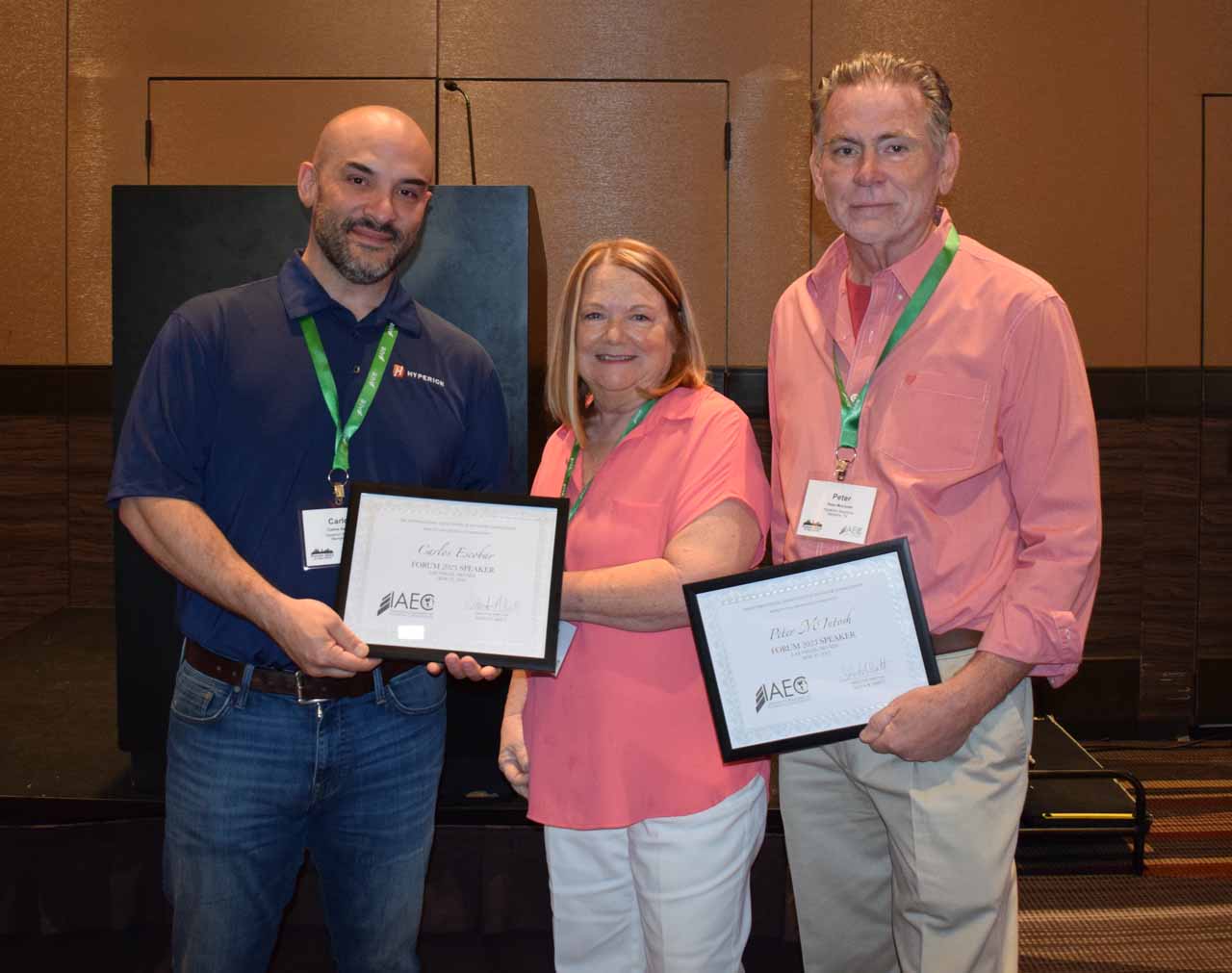
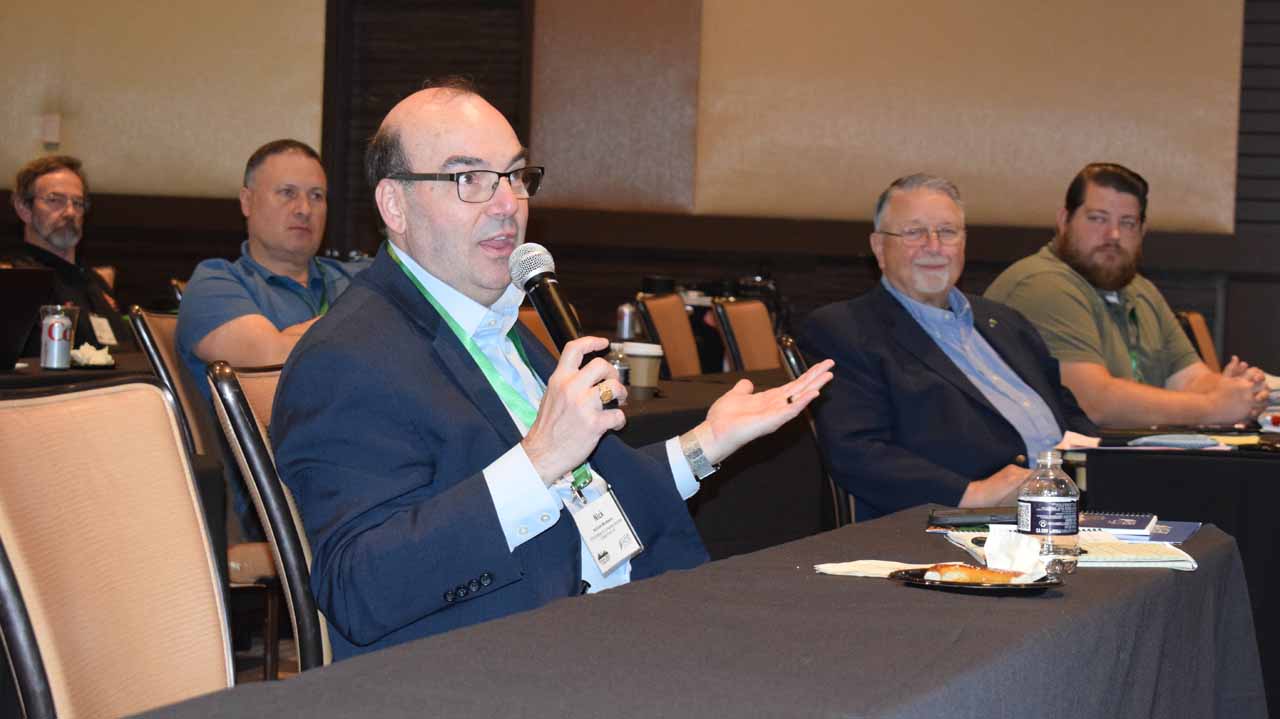
Thursday, May 25
After breakfast and another chance to visit vendor booths, the day got started with a long-requested topic: “VT Life Cycles,” presented by Dave Hardin of ATIS Elevator Consulting. Despite shorter life cycles generating more business for consultants, there are very good reasons consultants should care about VT equipment life cycles getting shorter, Hardin said, stating:
“We are the conscience of the industry and should be adding value to our clients’ capital planning portfolios. Which owners are most concerned about life cycles varies. Developers couldn’t care less; real estate investors, it depends. Financial institutions, universities, hospitals and government entities very much care because their budget cycles are longer.”
With the help of graphics displayed on a screen, Hardin illustrated minimum life cycles prior to the need for capital investment in various types of VT equipment, assuming adequate maintenance is being performed. For hydraulic and traditional traction elevators, as well as escalators and moving walks, the minimum life cycle is 25 years, but for MRL traction elevators, it’s only about 12 to 20 years, he said.
Hardin reviewed factors that impact VT life cycles: maintenance (quality and frequency), environment, usage (type and frequency), individual component life cycles and obsolescence and design/construction. When it comes to obsolescence, he said, what typically occurs is a circuit board or drive fails and no replacement exists or “a less-robust MRL gets to the ripe old age of 12, and there are few or no options for replacement.” To ease obsolescence’s impact on life cycles, fair, adequately funded maintenance agreements that encourage good maintenance (rather than opting to rip equipment out once its life cycle is over) are needed, Hardin said. “With the advancement of microprocessors and chip technology, our industry is becoming part of the ‘throwaway society,’” he said. “There is a lack of engineering for products to overcome minor obsolescence issues.”
Next up was Peter McIntosh and Carlos Escobar with Hyperion Solutions. They presented “The Secondary Brake Solution,” which focused on the single- to dual-plunger brake retrofit. Replacing a single vertical plunger and coil brake system with dual, horizontally opposed plungers fails to ensure future code compliance for modernizations and has limited adoption across various AHJs. However, it offers code-compliance flexibility — particularly in NYC — and is cost-effective. “In my opinion, this is a pretty elegant solution that should be considered throughout the industry,” McIntosh said.
Mathews of TAK Consulting then presented “Maintenance Trends,” based on his IEES Barcelona presentation. One of the main points, he said, is that remote data collection, AI and IoT cannot replace human examination and intervention, a sentiment often echoed by Koshak. Mathews also looked back at a successful ISEE and what it meant to have Sheila Swett and Daniel Swett in attendance. This portion of his presentation was illustrated with a photo collage of scenes from ISEE titled “Once Upon a Time in Bollywood.”
As vendors dismantled their booths in another ballroom, Christian Thomsen of Thomsen’s Inc. wrapped up presentations with “Escalator Handrail Solutions,” which promoted his company’s My Shield product. He explained how My Shield draws bacteria and other pathogens out of handrails (as well as step treads), its effectiveness versus others systems and how it is being used successfully in properties including airports and casinos. “If your customers want their properties hospital-clean, I encourage you to offer this product to them,” Thomsen said. Unveiled in 2015, My Shield is seeing success across North America and is gaining traction in Kuwait and Japan. Thomsen is working with one of the biggest step-tread cleaning companies in Europe, where six countries currently accept My Shield. It is currently manufactured in the U.S., and Thomsen is looking at other options going forward.
Montesano called the IAEC General Membership Meeting — signaling the traditional end to the forum — to order and led a round of applause for organizers Sheila and Daniel Swett. With no terms expiring, all BoD members and officers remain in place. Sheila Swett reminded the group of the importance of “knowing your vendors,” and observed the IAEC Forum is rare in that it gathers so many consultants and vendors together in one place. Reports revealed both the budget and membership numbers are strong. Montesano reflected on the success of this year’s Forum, noting the exciting location helped drive attendance and that many of the presentations were next-level good. “Each one of these events has been better than the last, and I would call this one a slam dunk,” Montesano said.
Get more of Elevator World. Sign up for our free e-newsletter.
